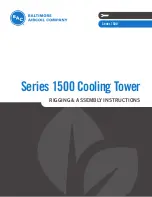
Electrical specifications
MODEL
MSZ-HE09NA
MSZ-HE12NA
MSZ-HE15NA
MSZ-HE18NA
INDOOR UNIT
Power supply (V, PHASE, Hz)
208/230, 1, 60
Min. Circuit Ampacity
(A)
1.0
Fan motor (F.L.A.)
(A)
0.76
OUTDOOR UNIT
Power supply (V, PHASE, Hz)
208/230, 1, 60
Max. Fuse size (time delay) (A)
15
15
15
15
Min. Circuit Ampacity
(A)
12
12
12
14
Fan motor (F.L.A.)
(A)
0.50
0.50
0.50
0.93
Compressor
(R.L.A) (A) MSZ
6.6
6.6
7.4
10.0
(L.R.A) (A) MSZ
8.2
8.2
9.3
12.5
Control voltage
Indoor unit - Remote controller: (Wireless)
Indoor unit - Outdoor unit: DC12-24 V (Polar)
Pipe
Outside diameter
Minimum wall
thickness
Insulation
thickness
Insulation material
inch (mm)
For liquid
1/4 (6.35)
0.0315 (0.8)
5/16 (8)
Heat resistant foam
plastic 0.045 Spe-
cific gravity
For gas
3/8 (9.52)
0.0315 (0.8)
5/16 (8)
1/2 (12.7)
0.0315 (0.8)
5/16 (8)
Limits
Pipe length
MSZ-HE09/12/15NA
65 ft. (20 m) max.
MSZ-HE18NA
100 ft. (30 m) max.
Height difference
MSZ-HE09/12/15NA
40 ft. (12 m) max.
MSZ-HE18NA
50 ft. (15 m) max.
No. of bends
10 max.
Pipe length
Up to 25 ft. (7.5 m)
No additional charge is required.
Exceeding 25 ft. (7.5 m)
Additional charge is required.
(Refer to the table below.)
Refrigerant to be
added
MSZ-HE09/12/15NA
1.62 oz each 5 ft. (30 g/m)
MSZ-HE18NA
1.08 oz each 5 ft. (20 g/m)
1-3. SPECIFICATIONS
1-3-1. POWER SUPPLY AND INDOOR/OUTDOOR
WIRE CONNECTION
• Power should be taken from an exclusive branched circuit.
• Wiring work should be based on applicable technical stand-
ards.
• Wiring connections should be made following the diagram.
• Securely tighten screws.
Connecting wires and the ground wire
• Use solid conductor Min. AWG14 or stranded conductor
Min. AWG14.
• Use double insulated copper wire with 600 V insulation.
• Use copper conductors only.
* Follow local electrical codes.
Power supply cable and ground wire
• Use solid or stranded conductor Min. AWG14.
• Use copper conductors only.
* Follow local electrical codes.
Note:
When the indoor unit is powered from the outdoor unit, depend-
ing on local code, a disconnect switch needs to be installed to a
power supply circuit.
• Refrigerant adjustment... If pipe length exceeds 25 ft. (7.5 m),
additional refrigerant (R410A) charge is required.
(The outdoor unit is charged with refrigerant for pipe length up
to 25 ft. [7.5 m])
• The unit has flared connections on both indoor and outdoor
sides.
• Remove the valve cover from the outdoor unit, then connect
the pipe.
• Refrigerant pipes are used to connect the indoor and outdoor
units.
• Be careful not to crush or over bend the pipe in pipe bending.
1-3-2. REFRIGERANT PIPES
• To prevent condensation, insulate the two refrigerant pipes.
• Refrigerant pipe bending radius must be 4 in. (100 mm) or
more.
CAUTION
Be sure to use the insulation of specified thickness (table on the
right). Excessive insulation may cause incorrect installation of
the indoor unit, and too little insulation may cause condensate to
form.
1-2. SELECTING THE INSTALLATION LOCATION
INDOOR UNIT
• Where airflow is not blocked.
• Where cool air spreads over the entire room.
• On a rigid wall to reduce the possibility of vibration.
• Where it is not exposed to direct sunlight. Do not ex-
pose to direct sunlight also during the period following
unpacking to before use.
• Where it can be easily drained.
• At a distance 3 ft. (1 m) or more away from a TV and
radio. Operation of the air conditioner may interfere
with radio or TV reception. An amplifier may be re-
quired for the affected device.
• In a place as far away as possible from fluorescent
and incandescent lights (so the infrared remote control
can operate the air conditioner normally).
• Where the air filter can be removed and replaced easily.
Note:
Install the indoor unit high on the wall where air can dis-
tribute over the entire room.
REMOTE CONTROLLER
• Where it is convenient to operate and easily visible.
• Where children cannot easily touch it.
• Select a position about 4 ft. (1.2 m) above the floor.
Check that signals from the remote controller from
that position are received by the indoor unit (‘beep’
or ‘beep beep’ receiving tone sounds). Then, attach
remote controller holder to a pillar or wall and install
wireless remote controller.
Note:
In rooms where inverter type fluorescent lamps are used,
the signal from the wireless remote controller may not be
received.
OUTDOOR UNIT
• Where it is not overly exposed to strong winds.
• Where airflow is good and dustless.
• Where neighbours are not annoyed by operation
sound or hot air.
• Where rigid wall or support is available to prevent the
increase of operation sound or vibration.
• Where there is no risk of combustible gas leakage.
• If installing the unit in a location high above the ground,
be sure to secure the unit legs.
• Where it is at least 10 ft. (3 m) away from the antenna
of TV set or radio. Operation of the air conditioner may
interfere with radio or TV reception in areas where re-
ception is weak. An amplifier may be required for the
affected device.
• Install the unit horizontally.
• Please install it in an area not affected by snowfall or
blowing snow. In areas with heavy snow, please install
a canopy, a pedestal and/or baffle boards.
Note:
• It is advisable to make a piping loop near outdoor unit
so as to reduce vibration.
• For increased efficiency, install the outdoor unit in a
location where continuous direct sunlight or excessive
water can be avoided as much as possible.
Note:
When operating the air conditioner in low outside tem-
perature, be sure to follow the instructions described
below.
• Never install the outdoor unit in a place where its air
inlet/outlet side may be exposed directly to wind.
• To prevent exposure to wind, install the outdoor
unit with its air inlet side facing the wall and a baffle
board on the air outlet side.
Avoid the following places for installation where air
conditioner trouble is liable to occur.
• Where flammable gas could leak.
• Where there is an excessive amount of machine oil
in the air.
• Where oil is splashed or where the area is filled with
oily smoke (such as cooking areas and factories,
in which the properties of plastic could be changed
and damaged).
• Salty places such as the seaside.
• Where sulfide gas is generated such as a hot spring.
• Where there is high-frequency or wireless equipment.
• Where there is emission of high levels of VOCs,
including phthalate compounds, formaldehyde, etc.,
which may cause chemical cracking.


























